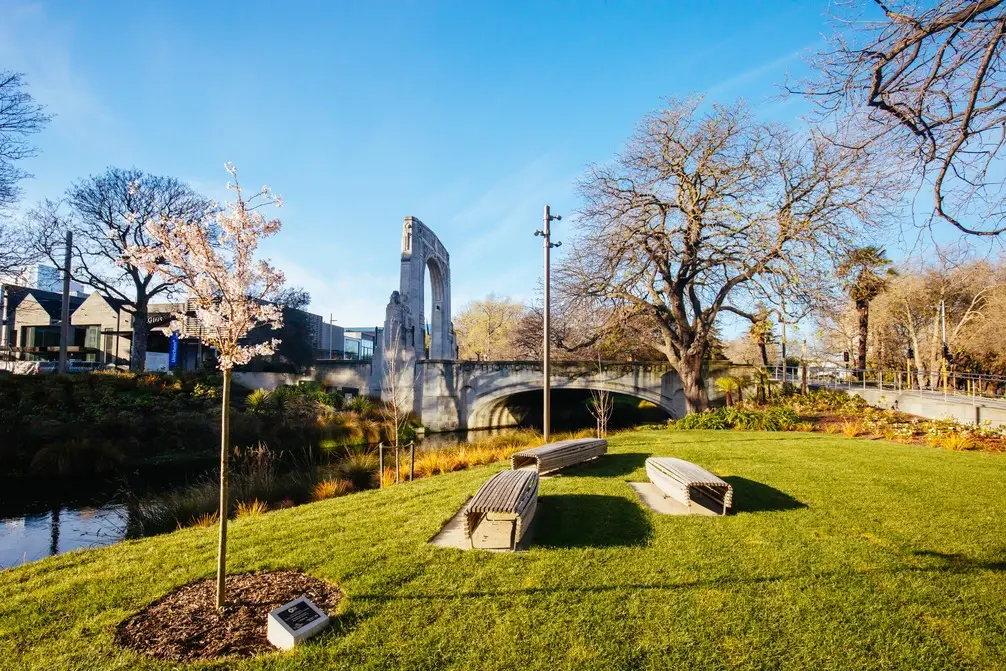
Sustainable Landscaping Ideas for Commercial Properties
Explore eco-friendly strategies to improve aesthetics, reduce costs, and promote biodiversity.
It’s no secret that everyone is looking for ways to become more sustainable. Commercial properties have a unique opportunity to lead by example. Sustainable landscaping includes the use of various methods to design spaces that are both eco-friendly and suitable.
It not only enhances the aesthetic appeal of a property, but also reduces environmental impact, lowers maintenance costs, and promotes biodiversity. Here are some innovative and practical ideas for sustainable landscaping in commercial properties.
Native Plant Selection
One of the foundational principles of sustainable landscaping is the use of native plants. These are plants that naturally occur in a particular region and are well-adapted to the local climate, soil, and wildlife. By choosing native plants for commercial landscapes, property owners can significantly reduce water usage and maintenance costs.
Native plants typically require less water once established because they have adapted to local rainfall patterns. This reduces the need for irrigation systems and conserves water—a critical resource in many regions. Moreover, native plants often require minimal fertilisers and pesticides, further lowering maintenance expenses and reducing chemical runoff into local waterways.
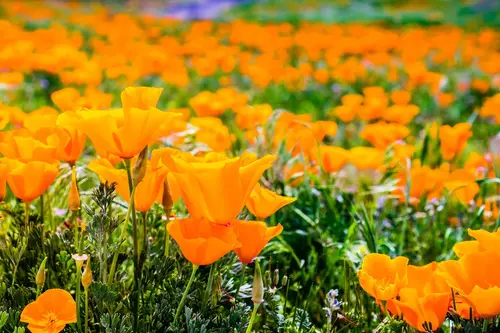
For instance, in California, drought-tolerant native plants like California poppies, mansanita shrubs, and sage species are popular choices for commercial landscapes. These plants not only thrive in the state’s Mediterranean climate but also support local pollinators and wildlife.
To implement native plant landscaping effectively, businesses can consult with local nurseries or landscape professionals specialising in native flora. These experts can help select appropriate species and design layouts that complement the property’s aesthetic while maximising sustainability benefits.
Water Conservation Techniques
Water scarcity is a growing concern in many parts of the world. Commercial properties can play a pivotal role in conserving water through innovative landscaping techniques.
One effective strategy is the use of drip irrigation systems. Unlike traditional sprinkler systems that can waste water through evaporation or runoff, drip irrigation delivers water directly to the plant roots, minimising waste and maximising efficiency. This method not only conserves water but also reduces water bills for property owners.
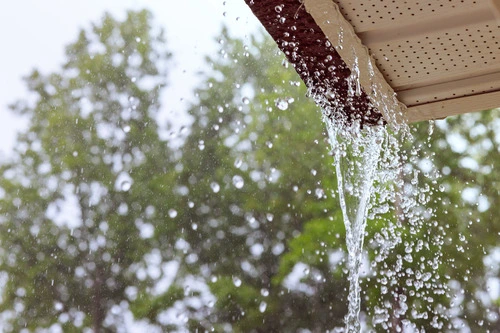
Rainwater harvesting is another water-saving technique gaining popularity in sustainable landscaping. By collecting rainwater from roofs or other surfaces, businesses can store water in barrels or cisterns for later use in irrigation. This reduces reliance on municipal water supplies and ensures plants receive natural, untreated water beneficial for their growth.
Incorporating drought-tolerant plants into the landscape design is also crucial for water conservation. These plants have evolved to survive with minimal water, making them ideal for regions prone to drought or water restrictions. Examples include succulents, ornamental grasses, and Mediterranean herbs, which thrive in arid conditions and require little to no supplemental watering once established.
By implementing water conservation techniques like drip irrigation, rainwater harvesting, and selecting drought-tolerant plants, commercial properties can significantly reduce their environmental footprint while maintaining attractive and vibrant landscapes.
Green Roofs and Living Walls
Green roofs and living walls—vertical gardens—are innovative solutions that offer numerous environmental benefits for commercial properties. These features involve covering rooftops or vertical surfaces with vegetation, creating additional green space and enhancing building aesthetics.
One of the primary benefits of green roofs is their ability to improve building insulation. By layering plants and soil over a building’s roof, green roofs reduce heat absorption and lower indoor temperatures during hot weather. This natural cooling effect reduces the need for air conditioning, leading to energy savings and decreased carbon emissions.
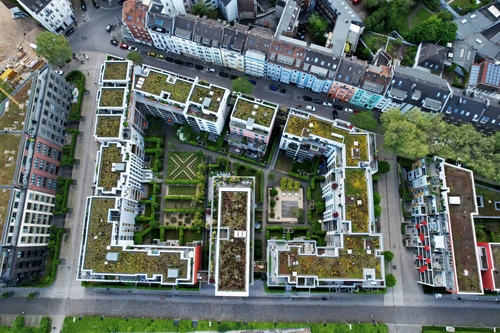
Moreover, green roofs mitigate the urban heat island effect—a phenomenon where urban areas experience higher temperatures than surrounding rural areas due to human activities and lack of green spaces. By introducing vegetation, green roofs help regulate temperatures and improve air quality, creating healthier and more comfortable environments for building occupants.
Living walls offer similar benefits on a vertical plane. These installations can be customised with a variety of plant species, providing aesthetic appeal and promoting biodiversity in urban settings. Living walls also act as natural air purifiers, filtering pollutants and carbon dioxide while releasing oxygen into the atmosphere.
Successful examples of green roofs and living walls can be found in commercial buildings worldwide. For instance, the Chicago City Hall in the United States boasts a notable green roof that reduces stormwater runoff and improves energy efficiency. Similarly, hotels and office buildings in Singapore incorporate lush living walls that enhance the city’s green infrastructure and provide urban dwellers with green spaces for relaxation and recreation.
Sustainable Materials and Practices
In addition to plant selection and water conservation, sustainable landscaping in commercial properties involves the use of eco-friendly materials and practices throughout the design and maintenance process.
Using recycled materials for landscaping features such as paths, benches, and containers is a sustainable choice that reduces waste and conserves natural resources. For example, recycled composite materials made from plastic and wood fibers can mimic the look of natural wood while offering superior durability and resistance to weathering.
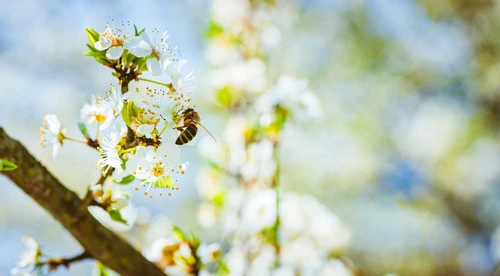
Integrated pest management (IPM) techniques are also integral to sustainable landscaping practices. IPM focuses on preventing pest problems through cultural practices, monitoring, and biological controls rather than relying solely on chemical pesticides. By encouraging natural predators and beneficial insects, businesses can minimise pest damage while minimising harm to the environment and non-target species.
Maintenance Strategies
Maintaining a sustainable landscape requires ongoing care and attention to ensure plants thrive while minimising environmental impact. Implementing eco-friendly maintenance strategies is essential for preserving the long-term health and beauty of commercial landscapes.
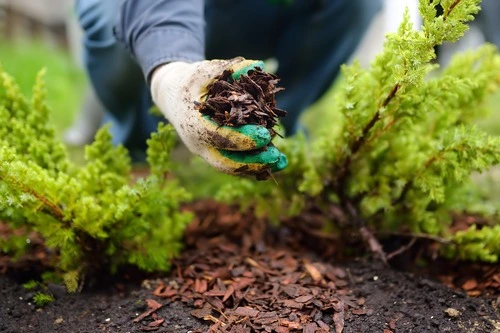
Mulching is a sustainable practice that offers numerous benefits for plant health and soil conservation. By applying organic mulch such as wood chips, bark, or shredded leaves around plantings, businesses can suppress weeds, retain soil moisture, and moderate soil temperatures. Additionally, organic mulches decompose over time, enriching the soil with valuable nutrients and improving overall plant vigor.
Proper pruning techniques are another aspect of sustainable landscape maintenance. Regular pruning promotes plant health by removing dead or diseased branches, improving air circulation, and shaping plants for optimal growth and aesthetics. By maintaining healthy plant structure and reducing potential disease outbreaks, businesses can minimise the need for chemical interventions and ensure landscapes remain vibrant and attractive year-round.
Using organic fertilisers is also essential for sustainable landscape maintenance. Unlike synthetic fertilisers, which can leach into groundwater and harm beneficial soil organisms, organic fertilisers release nutrients slowly and improve soil structure over time. Examples of organic fertilisers include compost, manure, and natural mineral amendments, which provide plants with essential nutrients while enhancing soil fertility and microbial diversity.
By integrating mulching, proper pruning techniques, and organic fertilisers into their maintenance routines, commercial properties can promote sustainable landscape practices that support plant health, conserve resources, and reduce environmental impact. These practices not only benefit the immediate landscape but also contribute to a healthier ecosystem and community.
Conclusion:
In conclusion, sustainable landscaping offers commercial properties an opportunity to enhance their environmental stewardship while reaping numerous benefits. By implementing native plant selection, water conservation techniques, green roofs and living walls, sustainable materials and practices, and eco-friendly maintenance strategies, businesses can create vibrant and resilient landscapes that reduce environmental impact, lower maintenance costs, and promote biodiversity.
As businesses strive to become more sustainable and socially responsible, sustainable landscaping provides a tangible way to demonstrate leadership in environmental stewardship. By prioritising sustainability in their landscaping decisions, commercial properties can inspire others to follow suit and contribute to a greener and healthier future for generations to come.
By adopting these innovative and practical ideas, commercial properties can transform their landscapes into thriving ecosystems that not only enhance aesthetic appeal but also contribute positively to the environment and community. Together, we can create sustainable landscapes that benefit people, planet, and prosperity.





